
***°***
RS147 Room 53 Desk
R.S.A.AM22-AM9-AM7- EQ 920
 |
EMI-BBC GEARS ***°*** RS147 Room 53 Desk R.S.A.AM22-AM9-AM7- EQ 920 |
|---|
 |
|---|
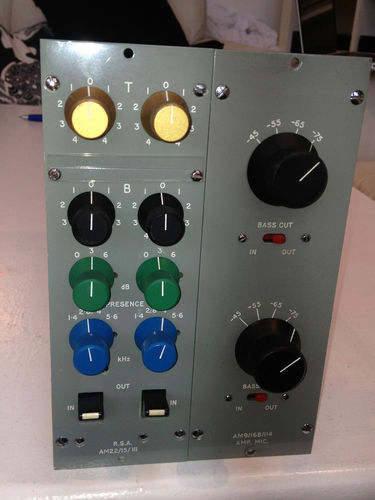
R.S.A. AM 22/15 EQ & AM 9/16B Silicon Transistors - preamplifer Headphones
Incredibly rare & absolutely Classic Vintage pre & eq in dual channel configuration. These deesigns are immediately contemporary to the Abbey Rd tg 12345 console installed in 1968 in time for the album of the same name. These particular modules were the last ever hand wound point to point components made by the bbc before they outsourced all their console production to Neve, Calrec, Audix and Glensound. They switched from germanium to silicon in the last production run. These, then, are the last Germanium Eqs ever produced by the bbc. These came from the bbc dk4/19 broadcast consoles at Bush House. |
|---|
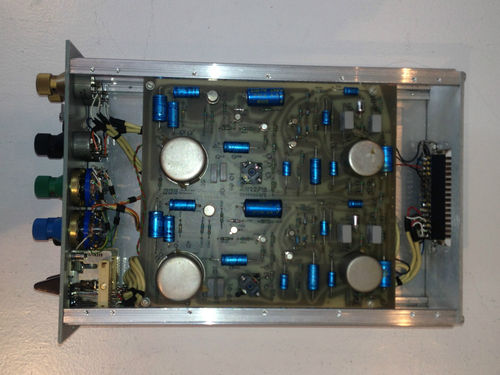
AM 22/15/III Chanell Stereo EQ
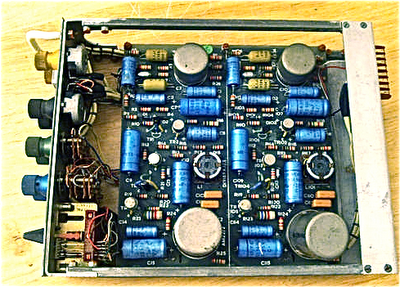
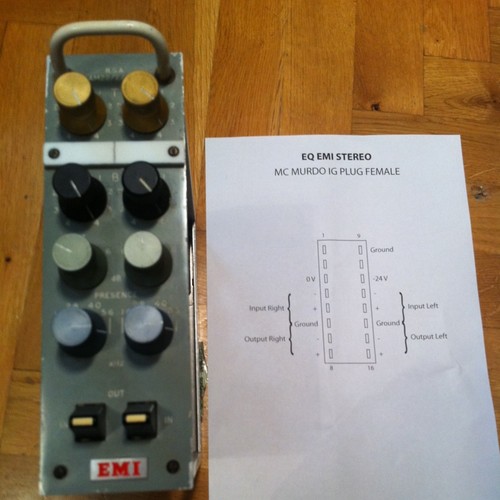
AM 22/15 Chanell Stereo EQ
Response Selection Amplifier. Updated version of AM22/9
using Silicon Transistors, and operating on !12V supplies.
Passive components are replaced by modern types, and front
panel modified. Power requirements !12V, 47mA. CHl/72A.
DD 1981. DDMI 3.715(82).
|
|---|
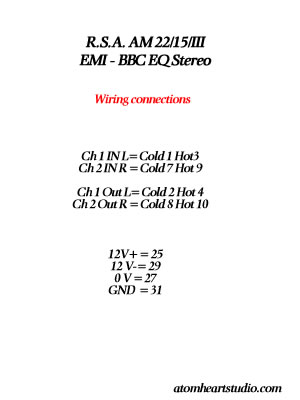
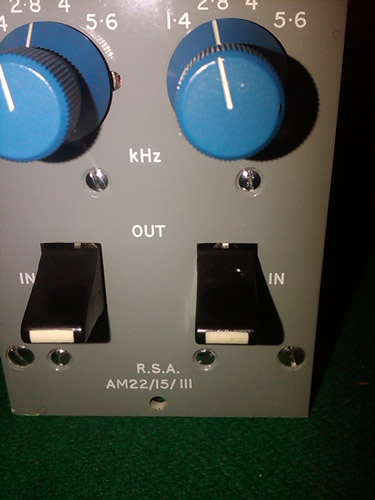
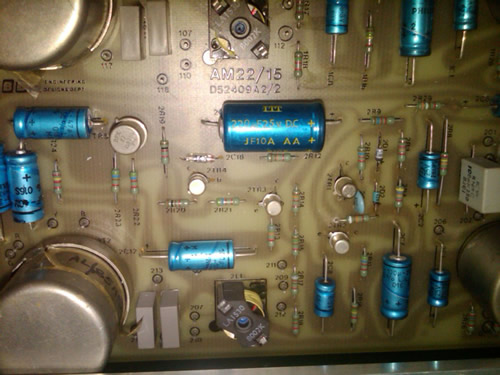
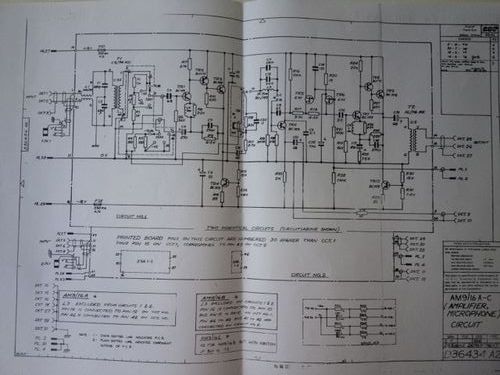
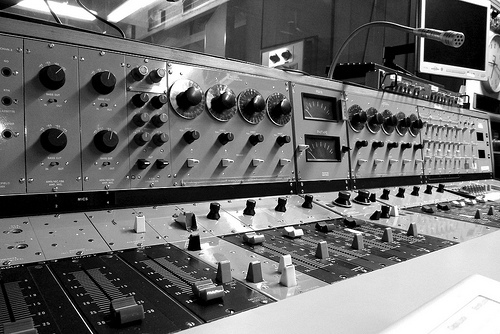
DK4/19 Mixing Desk at BBC in Birmingham
A Very Rare piece of British Broadcasting history. Cubicle DK4/19 mono mixing desk, 8x4ft complete wooden desk surround with 9x faders & fader channel controls, monitoring panel, tape, control & source selection. desk from The World Service studio S35 at Bush House, London. This desk was the 1st DK4/19 to be made and the prototype and was the last to broadcast from bush house.
….The BBC boss Mark Thompson, Director-General of the BBC record last World Service message from s35 and then this was played in the last news bulletin as the last word from Bush House.
This classic 1980’s desk is has now been remove from Bush House and is now in Birmingham.
The DK4/19 was state-of-the-art, but there was a variety of equipment in use at that time. Much of it hadn't changed since the early 1950s and Type B desks were widely used right up until the end of the 2012 The desk was entirely designed and built by the BBC in West London in the days before it either bought mixers off the shelf or gave a specification to a manufacturer (e.g. Calrec, Neve, Audix) and let them build it. DK is the BBC 'product' code for a mixing DesK.
--------------------------------------------------------------------------------------------------- 11th Oct 2012 after that it would need to be picked up from Birmingham.
==================================================================================================================================== Here are some memories of the desk from a BBC studio engineer I found on line.. we arrived at Bush house for the start of our on-station training, we were relieved and delighted to be introduced to the DK4/19 - the SMs' desk. This desk was hugely popular with SMs as it was truly a 'transmission' desk. It had just the facilities that were needed, nothing superfluous. And it was partly designed by SMs at Bush House. There are many of these desks still in use in the middle of the first decade of the 21st century. The DK4/19 was perhaps the first ever 'assignable' desk. At the top of the nine channels there was a large selector knob. You just had to turn this to route the source to the channel. You could choose from the two microphones (both STC4038s, of course!), common tapes, individual tapes, grams and up to four outside sources (switched to the studio by the control room - no routers in those days). Only one studio (S8) had that new-fangled machine, the Compact Disc Player. Each channel could be routed to one of two RSAs (Response Selection Amplifiers - i.e. equalisation) with a basic treble and bass response. The faders worked in the BBC manner - open towards the operator - and each channel had a green light/fader switch. The Cue Programme/Clean Feed switching was achieved in modules to the right of the desk, which also allowed 'Tone to CF' and 'Talkback on CF'. In the centre of the desk were the monitoring controls: two 24-way switches to accommodate the vast number of Bush House networks, all colour-coded. It was very easy to be one point out between the studio ringmain and the cubicle ringmain causing much confusion in the studio! There was no balance control - this was strictly a mono environment - and monitoring was on a single LS5/8. There were two facilities that were unique to Bush House. Firstly the 'Auto PTT' - or Pre-Transmission Test. At ten minutes before transmission the computer in Control Room would signal the PTT modules in the studio and a light would indicate the network that was ready for transmission. The SM would press the button to indicate that the studio was ready to work to that network, and the desk would send line-up tone. If the button hadn't been pressed with five minutes to go, an alarm would sound in Control Room and the DOM (Duty Operations Manager) would be alerted to go and find the sleeping SM! And secondly, a module marked 'Int Sig' for Interval Signal. All international broadcasters use interval signals. This is a short musical loop that is transmitted on the appropriate short-wave frequency prior to transmission to help the listener tune-in correctly. It is also used in an emergency to sustain the frequency if there is a loss of audio. In Bush House there was a choice of 'V', based on the Morse Code for that letter (di-di-di-dah), a left-over from the 'V-for-Victory' campaign during the second world war. This was used for transmissions within Europe. Elsewhere the signal was a tuneful 'Bee Bee Cee'. Finally on the desk was the all-important 'Cubicle Announce' switch. In those days all were required to be 'vocal' SMs. We were all given a voice test to ensure we were suitable for making the opening announcements at the start of the language transmissions. One that springs to mind is "This is London calling Latin America with our programmes in Spanish". The problem was that this key was a latching switch, so if you didn't keep your finger on the button while announcing it was easy to forget to un-latch it. This meant you were left with no cubicle monitoring - and any dumbfounded mumbling would be broadcast around the world while you worked out what was going on! |
|---|
EMI 920 EQ
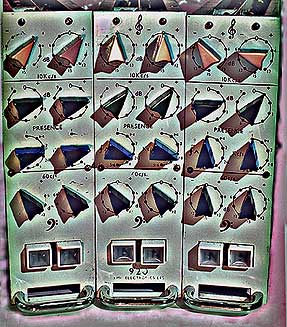
Beatles EMI EQ 920
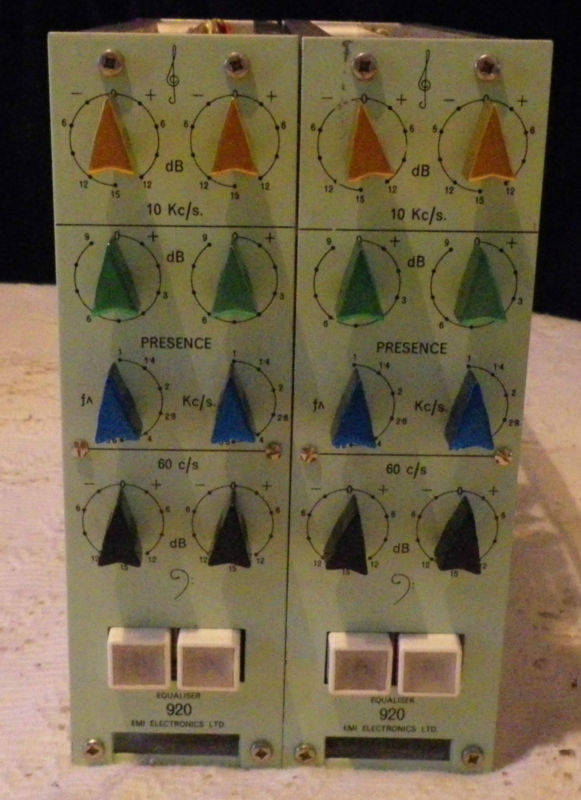
EMI 920 EQ Beatles
EMI 920 modules Manufactured by EMI England Hayes Middlesex circa 1967. EMI Electronics Ltd Broadcast & Recording Equipment Divison; Hayes, Middlesex, England (UK) - also called: EMI Electric+Musical Industries Ltd. The modules were the EMI stereo mastering equalisers produced in the UK, with several made and shipped with the REDD51 consoles, to many parts of the world as outboard equalisers for the consoles. The 920 modules were part of the REDD series module designs which included the 806 mic preamp and others. EMI's REDD recording consoles had a single bass and treble “pop” equalizer per channel — a 100Hz shelf, 500Hz and 10kHz boost/cut, the latter providing similar, if limited, curves to what a Pultec EQ can do with its separate boost and cut controls at the bass and treble ends of the audio spectrum. There was also an optional, fixed bass lift on each mic channel and specialized outboard EQs for additional frequencies. As the internal EQ was limited the external modules filled any gaps and were used extensively with the EMI sessions of the 50’s and 60’s.. Serial numbers are H134 and H146 Built in EMI Electronics colour "EMI blue" as used in all professional studio The 920 modules were part of the 900 series module designs I am the current owner and have fully documented them including drawing and reverse engineering the schematics from scratch. In the 1970's I worked for a NSW company called General Automation and was a part time contract maintainence engineer that worked on the I am always pleased to hear of anyone who has any information about these modules that can share some light on their history. Rola Australia P/L
These modules are built in EMI Electronics colour "EMI green" as used in all professional studio gear built in the 50”s and 60’s. |
|---|
Photos of Graham Dicker
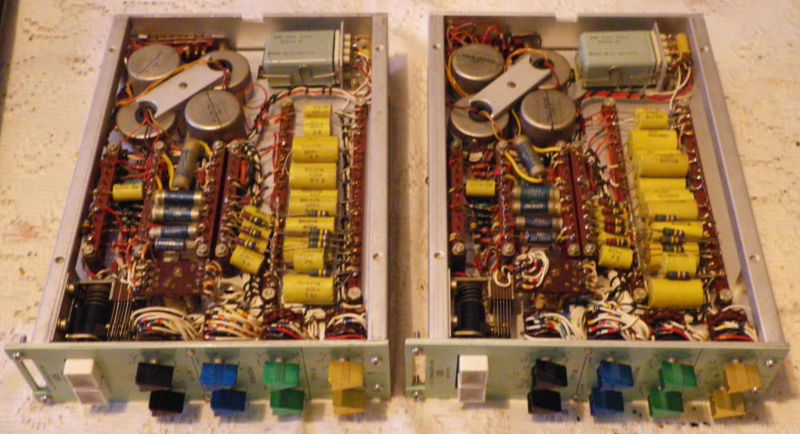
EMI 920 EQ

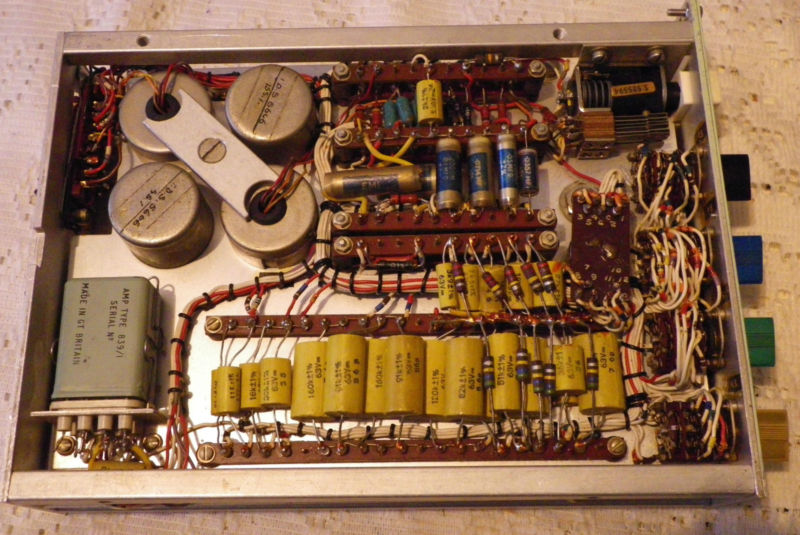
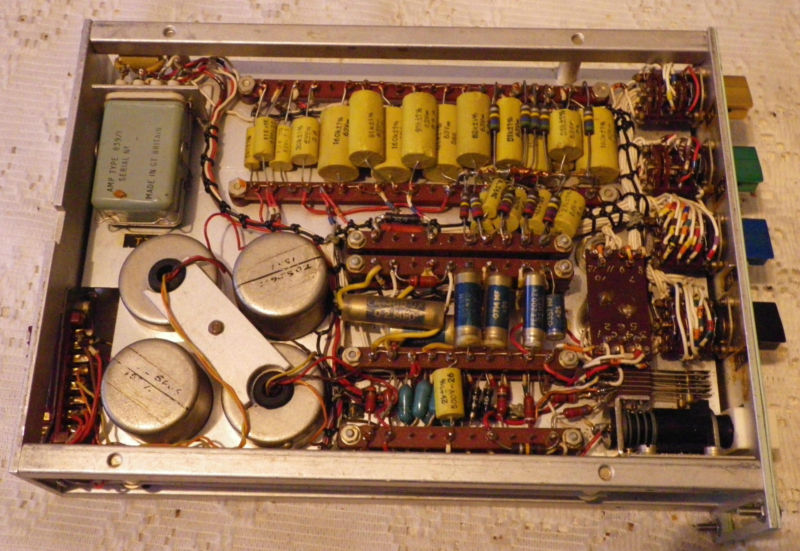
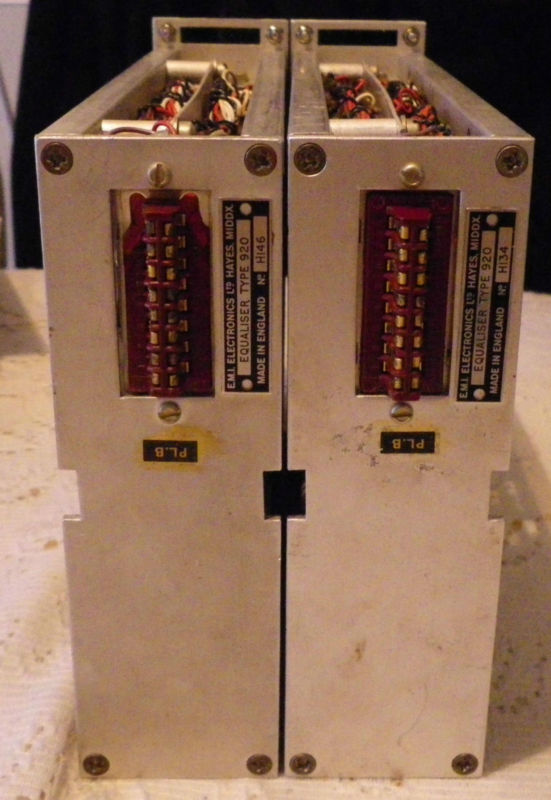
one of the rarest pieces of gear in the planet from the early EMI Abbey Road studios in the UK. Its a three band stereo bus equalizer, high boost is fixed, low boost is fixed and then the mid (presence) adds a few frequencies in the middle. High Band = 10 KHZ Mid Band = 1 - 1.4 - 2 - 2.8 - 4 - 5.6 KHZ Low Band = 60 HZ This equalizer comes from the REDD 51 console and there are only a few in the world highly collectable. given the limited eq in the REDD 51 consoles, I was told this equalizers where built for the master bus to be able to add some curves to the two bus before tape. It was always built in this original rack. Once the track was mastered to print vinyl I understood that the mastering house had a pair of pultecs and and a fairchild 670 in lateral vertical mode to control the needle of the vinyl cutter. THE SOUND: Well most of the people ask how this piece sounds. So this is best way I can describe it. 1) The middle is creamy 2) The High is pure air 3) The low end is subtle. The opamp is the green piece in the back that looks like a transformer, most of the tone comes from that piece therefore, it can be modified to a much transparent one and have a switch with different flavor. Remember that this pieces where not commercial they where build in the EMI lab for the use of the studios, pure point to point and discrete. Truly an incredibly built piece. REMARKABLE. The eq is all point to point, with the rare EMI green opamps. Its hard to put a price to this item, but I will follow the lead of the last time one this pieces went for auction. The KNOBS: they knobs are metal, and the two white plastic bottoms are the bypass. |
|---|
*********
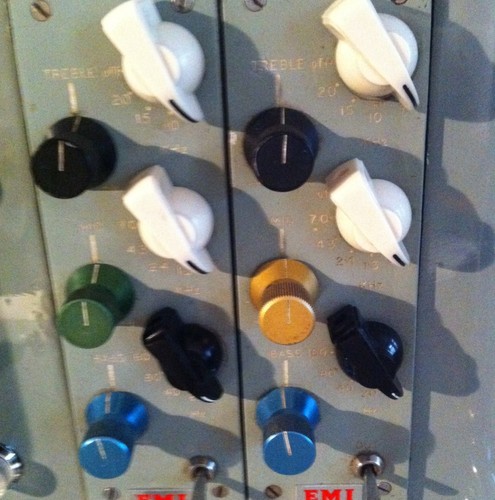
EMI 920 M EQ (Allotrope Ltd)
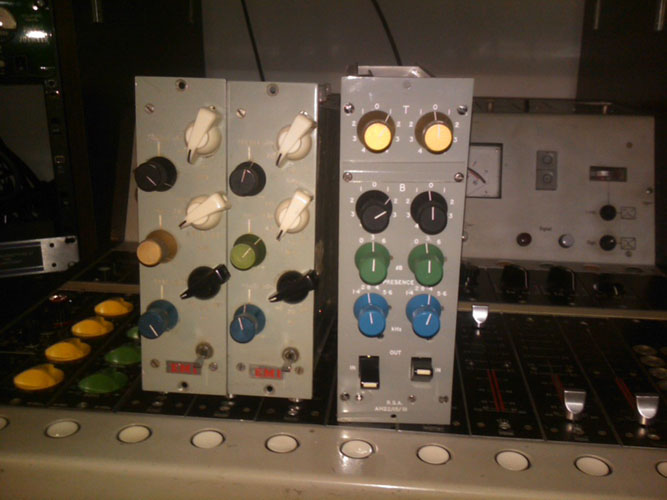
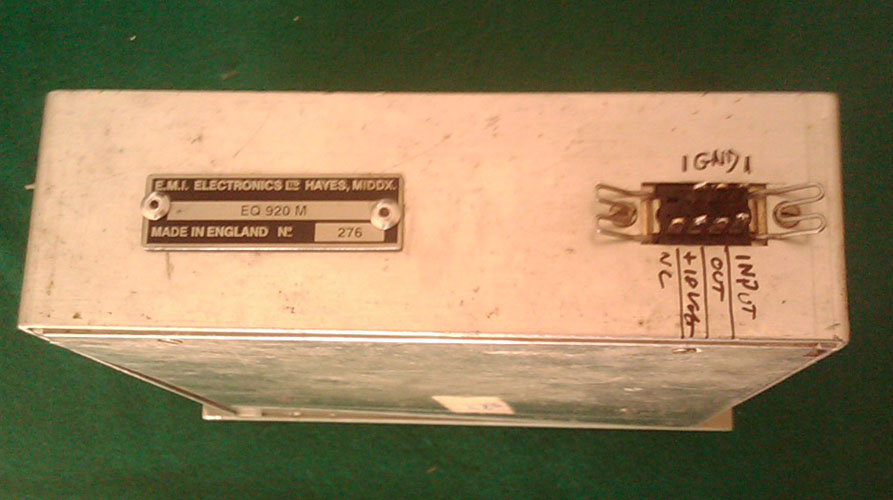
The EMI 920 M EQ was manufactured by Allotrope in early 1973. Taken from the pre-eq Allotrope Console design in 1970, build for John Paul Jones of Led Zeppelin. They has the same range of EQ's, but the integrated circuits instead of transistors. Best described as a cross between Trident A range and Neve, these early 1970's equalisers have a character all of their own.
*Historical Note (taken from the web) … |
|---|
Manor Mobile Studio with Helios Console
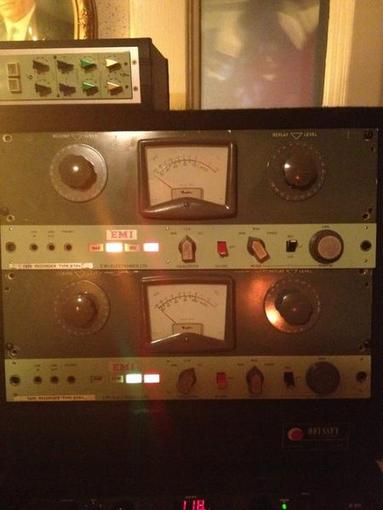
EQ 920 & BTR 2 Tape Machine
*********************
RS147 Room 53 Desk
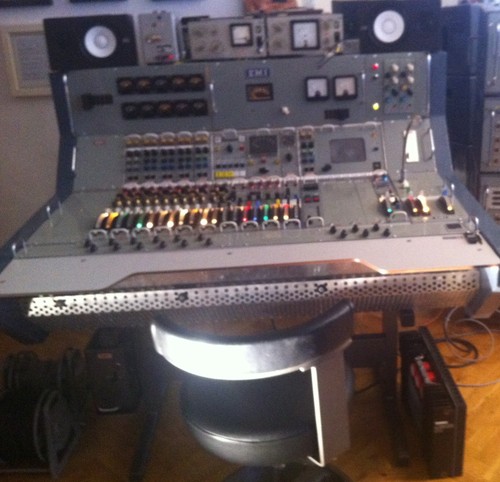
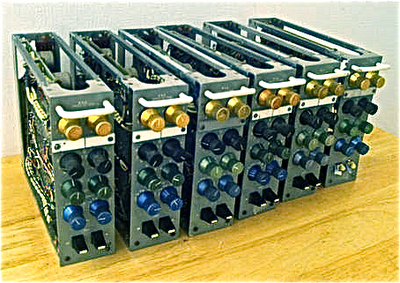
RSA's AM22 Equalizer

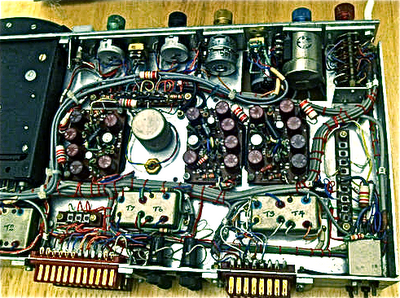
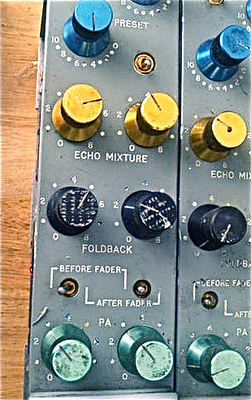
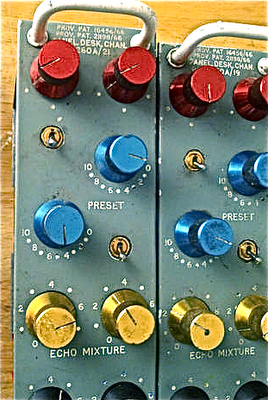
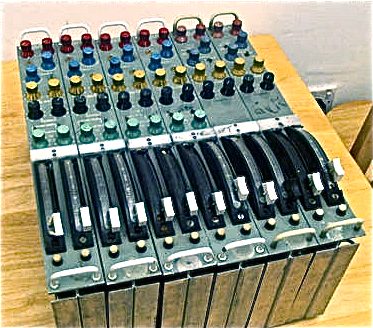
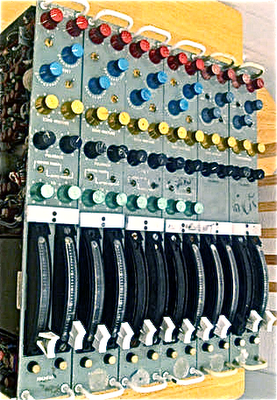
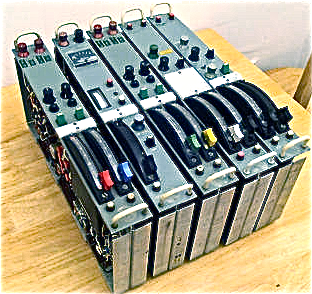
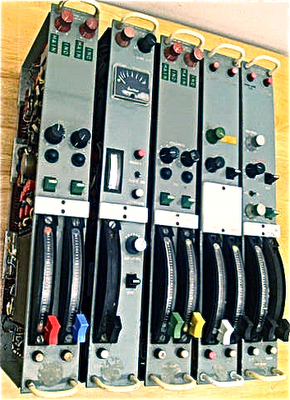
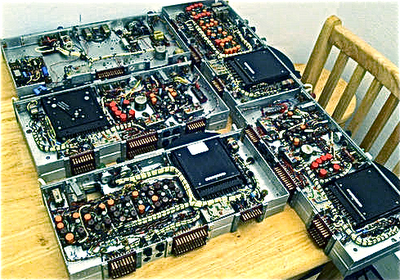
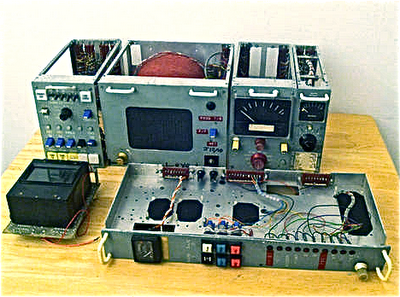
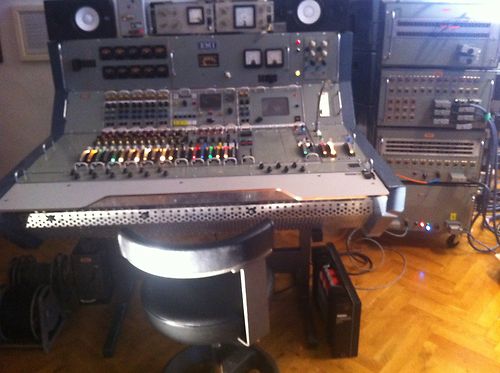
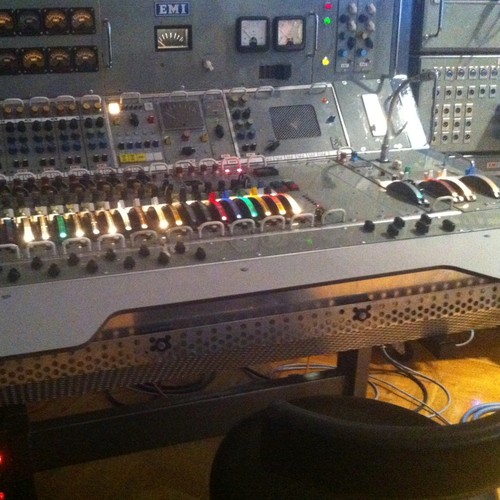
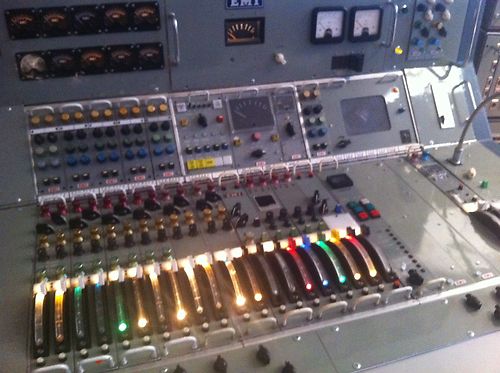
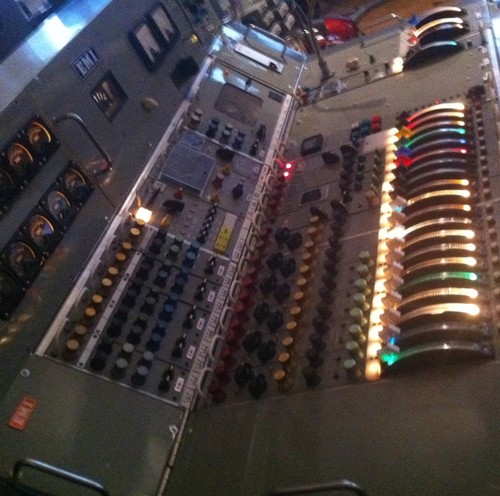
Others BBC-EMI
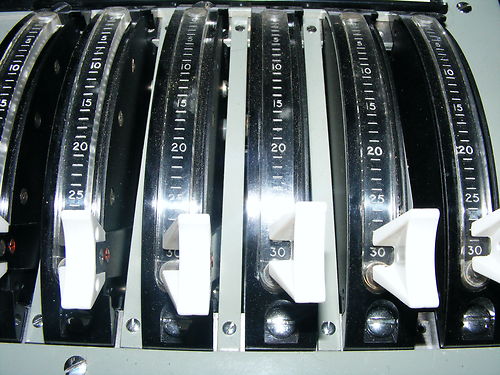
BBC AM6/14
Compressor Gate Limiter


BBC AM6/14: This is a monophonic limiting-amplifier for use at audio frequencies. It has been designed primarily for transmitter protection but has facilities which make it suitable for studio use also. Two of the amplifiers can be ganged for stereophonic use by means of simple wired connections between tags of their mating connectors. The limiting action is free from overshoot. A meter on the front panel indicates gain-reduction and gain recovery time is switchable to any of seven fixed values between 160ms and 3s or to auto recovery i.e a condition in which the recovery time is 10s but changes to approximately 0.5s if gaps of 1s or more occur in the programme. Another facility activated by gaps in the programme ( in this instance gaps of 0.6s or more) is a noise gate of the amplifier by 12dB when such gaps occur. An Input attenuator is provided to enable the amplification of an incoming 0dB volume signal to be varied in 2dB steps, so as to produce up to 20db of gain reduction by the limiting circuit. The gain recovery and noise gate attenuator switches are all front panel controls. |
|---|
°°°*  *°°°
*°°°
Schematics
AM9
AM6-7-20
AM6/14
AM6/7
.jpg)
BBC AM9/19B Mic-amp module + BBC AM7/13 Hi gain line amp moduler
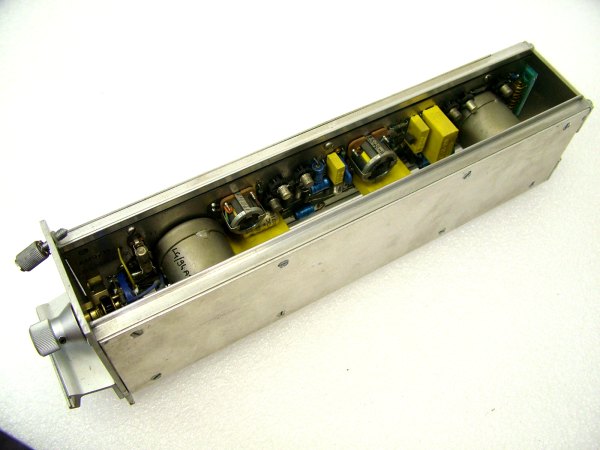
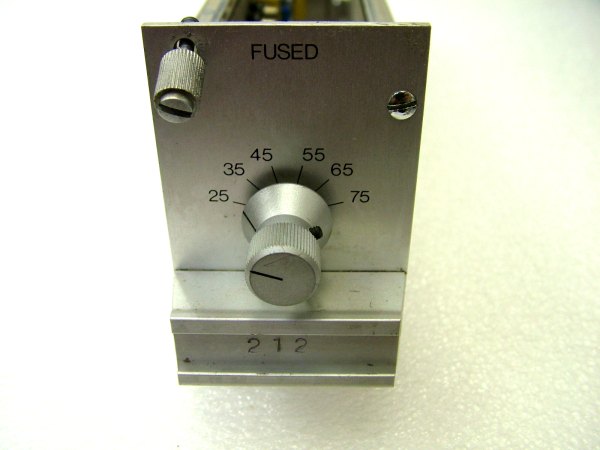
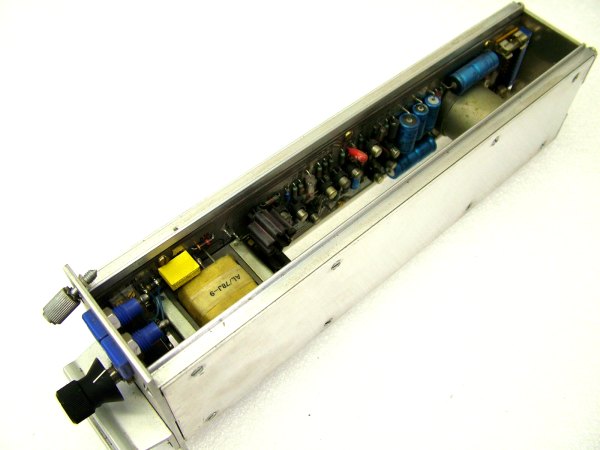
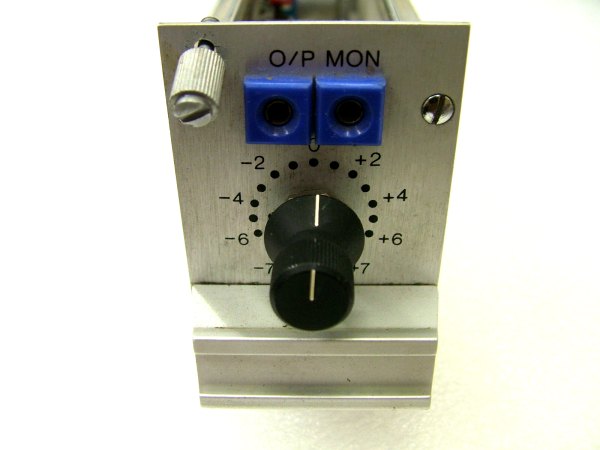
AM9/19B Mic amp module has 75dB gain.
AM7/13 Hi gain line amp module has -7 tp +7.